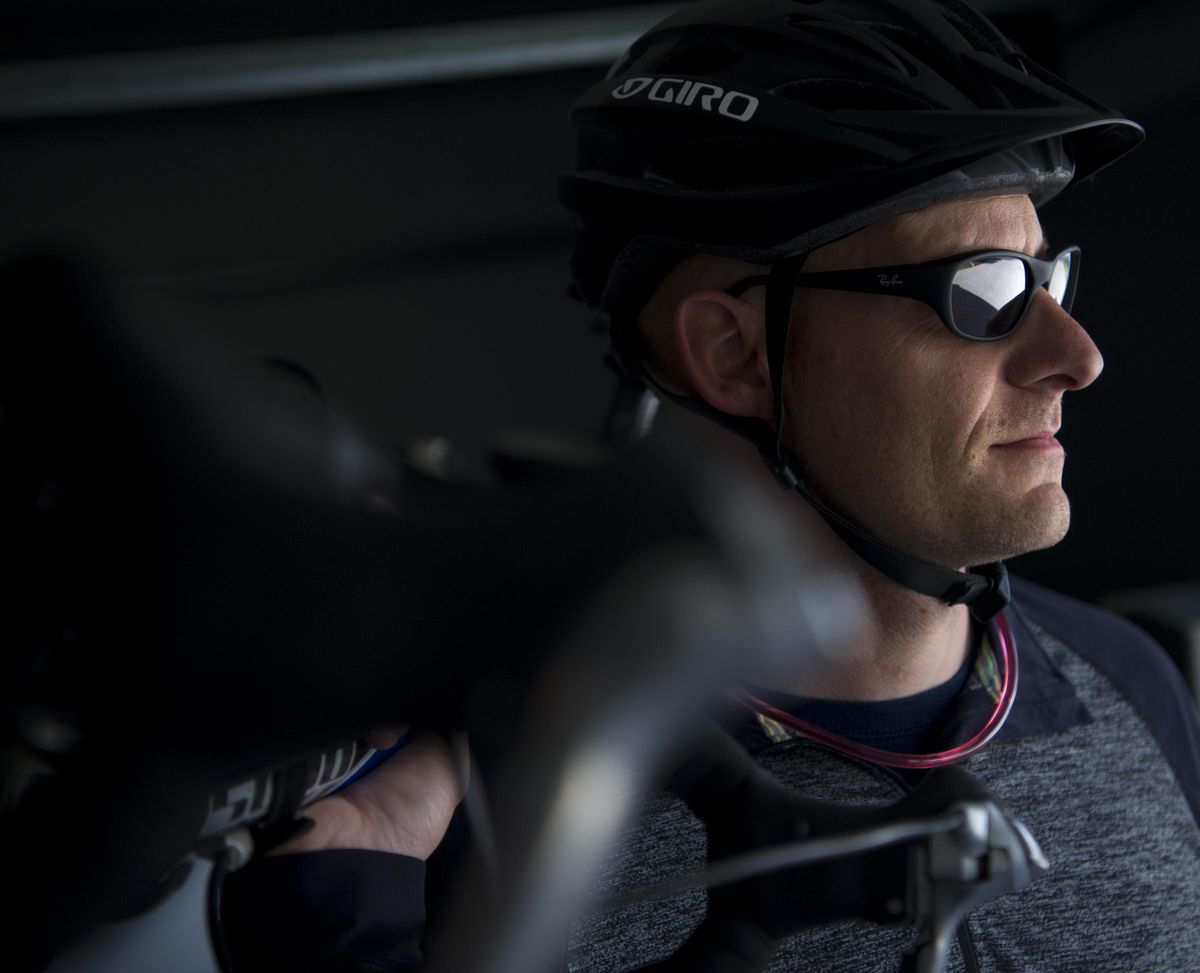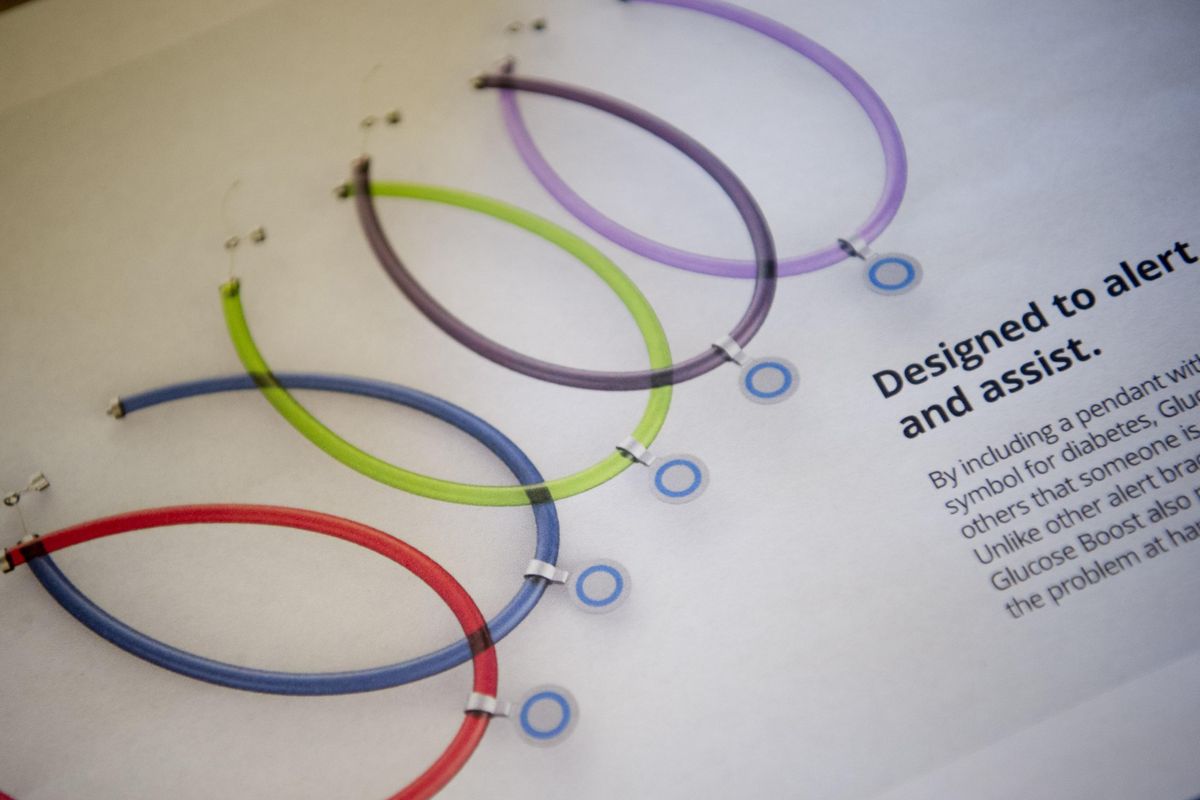Athlete develops glucose necklace to keep diabetics on the run
Fairchild AFB Firefighter Kris Maynard, of Mead, wears a glucose gel necklace he developed with Gonzaga basketball legend Adam Morrison for people living with diabetes. (TYLER TJOMSLAND tylert@spokesman.com)
The race runs a bit differently for an athlete with diabetes.
Sometimes it stops altogether.
It happened two years ago to Kris Maynard, a Spokane man whose Bloomsday experience began with a container of fruit juice to maintain his blood sugar level.
“But it was just too bulky,” said Maynard, who discarded the juice a mile into the race.
By Mile 5, he was calling his wife, Paula, to meet him with some glucose to help him finish the race.
That was just one incident that led to an inspiration: a hollow necklace that contains glucose. Easy to wear and even easier to use, the necklace contains enough glucose to keep a diabetic athlete on the run – or perhaps save his life.
“It’s something I wish I’d had sooner,” said the 39-year-old Maynard, a firefighter and emergency medical technician at Fairchild Air Force Base. In that role, he’s been in a position to help diabetics as a first responder.
Then it hit him – few diabetics and their families know about the glucose gel used by first responders. It’s rubbed on the victim’s gums for quick absorption, raising blood-sugar levels much faster than a liquid.
It also can prevent a hospital trip.
Working with a silent partner – former Gonzaga basketball star Adam Morrison – the Maynards have a patent pending on the necklace, which is in the prototype phase and isn’t yet on the market. It contains 25 grams of glucose. The American Diabetes Association recommends all diabetics carry 15 grams of something to raise blood sugar because it is such a common occurrence.
The necklace is discreet, even stylish, has a magnetic clasp and is easy to use. A pendant displays the universal diabetes symbol, a blue circle, created by the International Diabetes Federation.
The Maynards are still working through prototypes; they started with straws.
“We’re reaching out to companies,” Kris Maynard said. “We’re just trying to see what the need is out there, then manufacturing it.”
That need is increasing, according to the ADA, which estimates that by 2050, one in every three Americans will be diabetic. Most want to lead full lives, including sports.
“When camping with his sons a few years ago, Maynard was convulsing, and they were unable to wake him. After some panicked moments, they reached Paula, who guided them long-distance on how to make the injection that saved Maynard’s life.
The necklace would have been a quick solution.
“My blood sugar is like a roller coaster,” said Maynard, who’s training for long-distance bicycling rides. “This could help a lot of people.”

